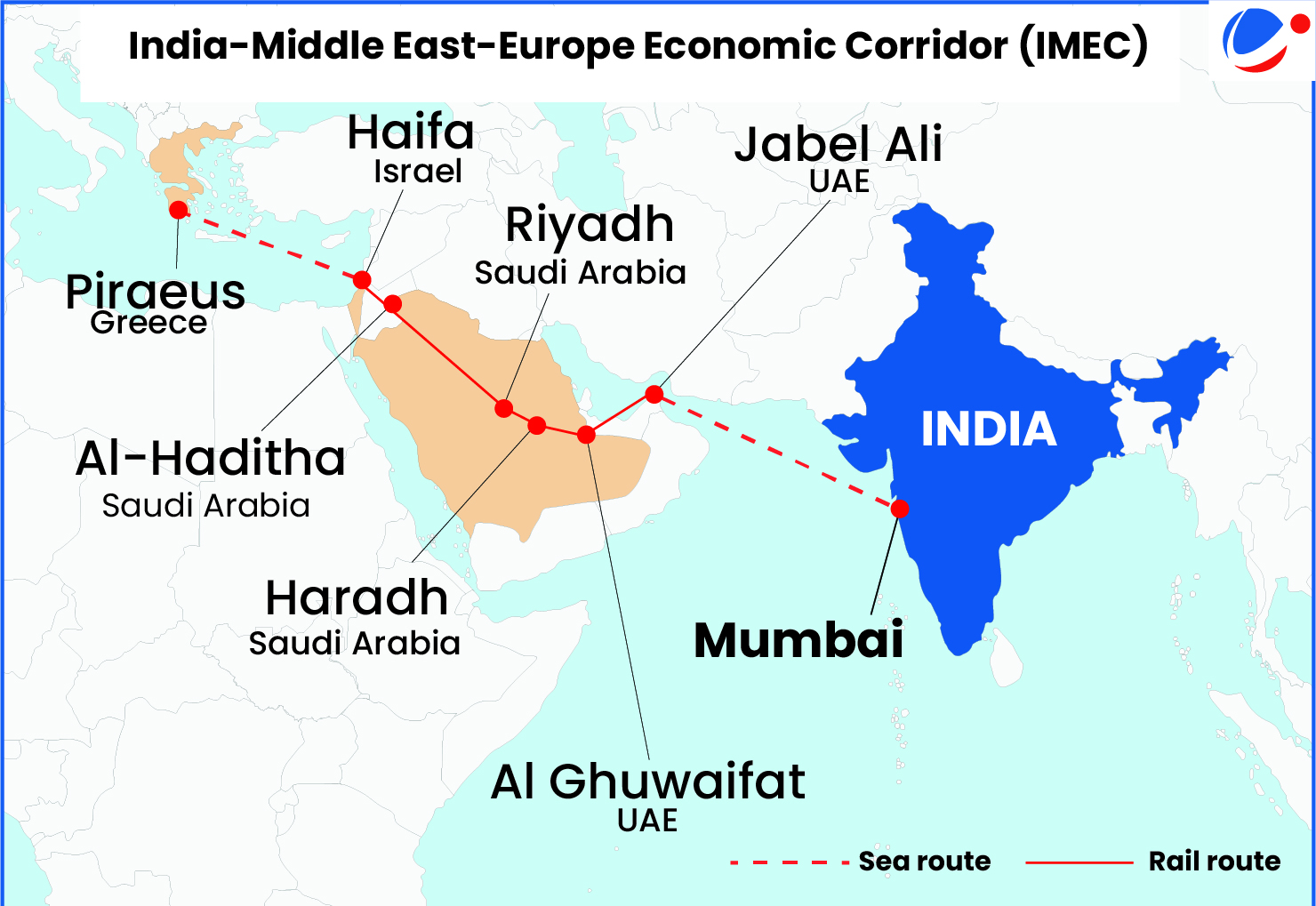The Minister highlighted that IMEC will bring down logistics costs by up to 30%, reduce transportation time by 40%, and create seamless trade linkages across continents.
- The Minister also suggested ways for robust implementation of IMEC projects.
- It includes collaboration and active engagement of all stakeholders (industry, think tanks and academia), Innovative Financing Models (e.g. long-term IMEC Bonds), etc.
- Silk Route was a historic trade route that was used from the second century B.C. until the 14th-15th century A.D. It stretched from Asia to Europe.
About IMEC
- A multi-modal connectivity project, formalized by MoU signed between India, European Union, France, Germany, Italy, Saudi Arabia, UAE and the US at the G20 Summit (2023) in New Delhi.
- Aim: Developing infrastructure of ports, railways, roads, sea lines and pipelines to enhance trade between India, the Arabian Peninsula, the Mediterranean region and Europe.

Strategic Importance of IMEC
- Geostrategic: Promotes trade resilience by providing alternatives to critical sea lines of communication, bypassing maritime chokepoints like Suez Canal.
- Geoeconomic: Taps potential of economic integration between India, Middle East and Europe.
- Other: Offers an alternative approach to China’s Belt and Road Initiative.




